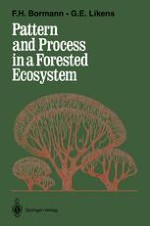The advent of ecosystem ecology has created great difficulties for ecologists primarily trained as biologists, since inevitably as the field grew, it absorbed components of other disciplines relatively foreign to most ecologists yet vital to the understanding of the structure and function of ecosystems. From the point of view of the biological ecologist struggling to understand the enormous complexity of the biological functions within an ecosystem, the added necessity of integrating biology with geochemis try, hydrology, micrometeorology, geomorphology, pedology, and applied sciences (like silviculture and land use management) often has appeared as an impossible requirement. Ecologists have frequently responded by limiting their perspective to biology with the result that the modeling of species interactions is sometimes considered as modeling ecosystems, or modeling the living fraction of the ecosystems is considered as modeling whole ecosystems. Such of course is not the case, since understanding the structure and function of ecosystems requires sound understanding of inanimate as well as animate processes and often neither can be under stood without the other. About 15 years ago, a view of ecology somewhat different from most then prevailing, coupled with a strong dose of naivete and a sense of exploration, lead us to believe that consideration of the inanimate side of ecosystem function rather than being just one more annoying complexity might provide exceptional advantages in the study of ecosystems. To examine this possibility, we took two steps which occurred more or less simultaneously.
